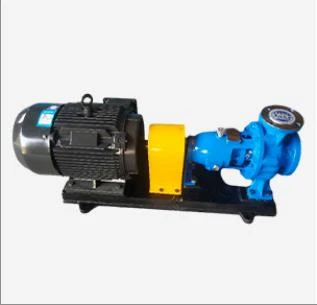English
- Afrikaans
- Albanian
- Amharic
- Arabic
- Armenian
- Azerbaijani
- Basque
- Belarusian
- Bengali
- Bosnian
- Bulgarian
- Catalan
- Cebuano
- Corsican
- Croatian
- Czech
- Danish
- Dutch
- English
- Esperanto
- Estonian
- Finnish
- French
- Frisian
- Galician
- Georgian
- German
- Greek
- Gujarati
- Haitian Creole
- hausa
- hawaiian
- Hebrew
- Hindi
- Miao
- Hungarian
- Icelandic
- igbo
- Indonesian
- irish
- Italian
- Japanese
- Javanese
- Kannada
- kazakh
- Khmer
- Rwandese
- Korean
- Kurdish
- Kyrgyz
- Lao
- Latin
- Latvian
- Lithuanian
- Luxembourgish
- Macedonian
- Malgashi
- Malay
- Malayalam
- Maltese
- Maori
- Marathi
- Mongolian
- Myanmar
- Nepali
- Norwegian
- Norwegian
- Occitan
- Pashto
- Persian
- Polish
- Portuguese
- Punjabi
- Romanian
- Russian
- Samoan
- Scottish Gaelic
- Serbian
- Sesotho
- Shona
- Sindhi
- Sinhala
- Slovak
- Slovenian
- Somali
- Spanish
- Sundanese
- Swahili
- Swedish
- Tagalog
- Tajik
- Tamil
- Tatar
- Telugu
- Thai
- Turkish
- Turkmen
- Ukrainian
- Urdu
- Uighur
- Uzbek
- Vietnamese
- Welsh
- Bantu
- Yiddish
- Yoruba
- Zulu
Telephone: +86 13120555503
Email: frank@cypump.com
Oct . 18, 2024 14:47 Back to list
Selecting the Right Septic Sewage Pumps for Your Waste Management Needs
Understanding Septic Sewage Pumps
When it comes to managing wastewater in remote areas or homes that are not connected to a municipal sewer system, septic systems play a critical role. One of the key components of a septic system is the septic sewage pump. This article will delve into what septic sewage pumps are, their function, types, maintenance, and their importance in the sewage management system.
What is a Septic Sewage Pump?
A septic sewage pump is a type of pump designed to transport wastewater from a septic tank to a drainage field or sewer. It is crucial for homes that are located in low-lying areas where gravity cannot efficiently move wastewater away from the property. Essentially, these pumps work to ensure that effluent is transferred properly, protecting both the environment and public health.
Functions of Septic Sewage Pumps
The primary function of septic sewage pumps is to move wastewater out of the septic tank. When a septic tank fills with wastewater, a pump will automatically engage to transport the liquefied waste to the absorption area. This process helps
1. Prevent Overflows Regular and efficient pumping means less risk of overflow, which can lead to unsightly and unhealthy messes in and around the home. 2. Enhance Efficiency By maintaining proper levels within the septic tank, these pumps promote the maximum effectiveness of the bacterial processes needed to break down waste. 3. Protect Groundwater Proper wastewater management ensures pollutants do not seep into the groundwater, which can pose health risks for the local community.
Types of Septic Sewage Pumps
septic sewage pumps

There are two main types of septic sewage pumps submersible and pedestal pumps.
1. Submersible Pumps These are designed to be submerged in the wastewater. They are more efficient in moving large volumes of liquid and are generally quieter. They are often used in more permanent installations where they can be installed in a septic tank or a sump.
2. Pedestal Pumps These pumps are located above the wastewater level. They have a long shaft that extends down into the tank, making maintenance easier. However, they can be noisier and are typically used in situations where submersible pumps may not be practical.
Maintenance of Septic Sewage Pumps
Regular maintenance is key to ensuring the long-lasting operation of septic sewage pumps. Here are some best practices for maintaining your pump
- Regular Inspection It’s important to check the pump and associated components at least once a year. Look for signs of wear or damage. - Keep the Area Clear Ensure that the area around the pump is free from debris or vegetation that could obstruct its operation. - Test the Pump Periodically test the pump by filling the tank with water to check if it activates and operates properly. - Professional Servicing Consider hiring a professional to conduct a thorough inspection and servicing, especially if you encounter any issues.
Conclusion
Septic sewage pumps are essential for the effective functioning of septic systems, especially in areas without access to a municipal sewage network. By understanding their function, types, and the importance of routine maintenance, homeowners can ensure that their sewage management system operates effectively and safely. Proper care of these pumps not only protects individual households but also contributes to the health and safety of communities by preventing wastewater issues that can have broader implications for public health and the environment. Investing in quality septic sewage pumps and maintaining them is fundamental to protecting our most vital resources our water and the environment.
-
Heavy-Duty Mining Sludge Pumps - Wear-Resistant Slurry Handling
NewsAug.02,2025
-
Horizontal Split Case Pump with GPT-4 Turbo | High Efficiency
NewsAug.01,2025
-
ISG Series Pipeline Pump - Chi Yuan Pumps | High Efficiency, Durable Design
NewsAug.01,2025
-
Advanced Flue Gas Desulfurization Pump with GPT-4 Turbo | Durable & Efficient
NewsJul.31,2025
-
ISG Series Vertical Pipeline Pump - Chi Yuan Pumps | Advanced Hydraulic Design&Durable Construction
NewsJul.31,2025
-
ISG Series Vertical Pipeline Pump - Chi Yuan Pumps | Energy Efficient & Low Noise
NewsJul.31,2025










